| Columns Retired Columns & Blogs |
Not surprising! Whenever I read the mag, Bel Canto is often one of the 'Associated Equipment. Must be a gem! Maybe, I will learn at T.H.E. Show in Newport!
I used Stereophile's loan sample of the top-of-the-line Audio Precision SYS2722 system (see www.ap.com and the January 2008 "As We See It") to measure the Bel Canto C7R's analog and digital inputs. To test the C7R as a digital processor and phono preamplifier, I took the measurements from the Line Output jacks. (I didn't test the FM tuner's performance.) Because the C7R has a class-D output stage, the presence of ultrasonic noise in its output might affect the Audio Precision analyzer's performance, so I placed an Audio Precision AUX-0025 passive low-pass filter between the dummy load and the analyzer's input. This filter has a maximum input level of ±200V peak, and rejects noise above 200kHz without affecting the measured performance.
Starting with the phono input, this offered a maximum gain of 45dB measured at the preamp output, which is appropriate for moving-magnet cartridges. With the volume control set to "100," the signal at the speaker outputs was 24.8dB higher. The phono input inverted absolute polarity at both the line and speaker outputs. The input impedance was 46k ohms at middle and low frequencies, dropping inconsequentially to 39k ohms at the top of the audioband. The RIAA response featured a broad +0.3dB plateau in the treble and was –3dB at 10Hz, but the equalization matched very closely between channels (fig.1). Noise was low in level, and the phono overload margins were a fairly good 12–14dB at all audio frequencies ref. 1kHz at 5mV. As can be seen in fig.2, taken with a 1kHz tone at 5mV, distortion via the phono input was also very low, the only harmonics visible in the spectrum being the subjectively benign second and third, at –90dB (0.003%) and –100dB (0.001%), respectively.
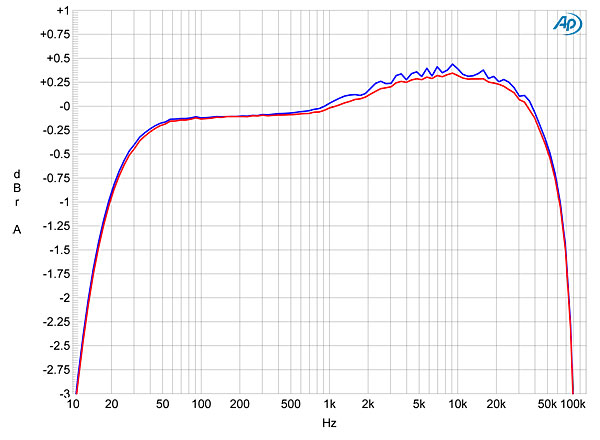
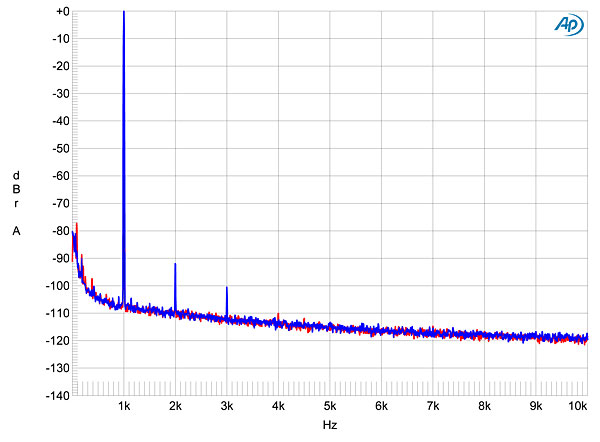
Turning to the digital inputs, Apple's USB Prober utility identified the C7R as the "Bel Canto 2496 USB," operating in isochronous adaptive mode and handling 24-bit data with sample rates of 44.1, 48, 88.2, and 96kHz. Though the C7R's coaxial digital inputs successfully locked to data with sample rates of up to 192kHz, the TosLink inputs were limited to 96kHz and below, which is usual for this interface.
Like its phono input, the Bel Canto's digital input inverted absolute polarity at both the line and speaker outputs. (Though the remote control has a button labeled Phase, this didn't do anything.) With the volume control at its maximum, a full-scale, 24-bit tone at 0dBFS gave a level at the line output of 3.79V. However, the amplifier section was clipping with a 0dBFS signal and the volume control set to "100."
Fig.3 shows the frequency response of the C7R's digital input with sample rates of 44.1, 96, and 192kHz. With the lower sample rates, the response starts to gently roll off above 10kHz, with then a sharp cutoff just below the Nyquist Frequency (half the sample rate). Channel separation via the digital inputs (not shown) was excellent in the midrange and below, at >115dB, but decreased to 105dB L–R and 78dB R–L (not shown).
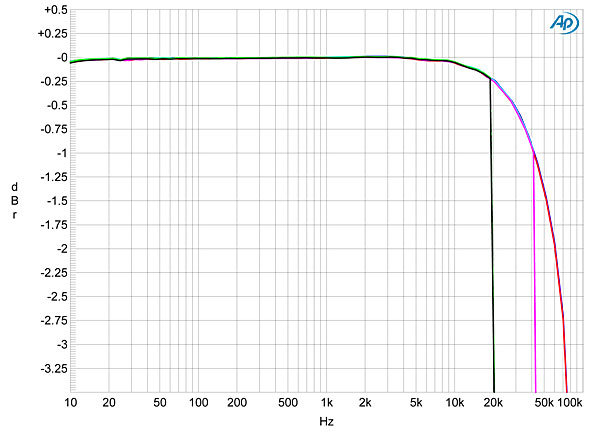
With both 16- and 24-bit data via the S/PDIF inputs, a dithered 1kHz tone at –90dBFS was correctly reproduced at the correct level, suggesting minimal linearity error (fig.4). With 24-bit data (blue and red traces), the noise floor dropped by up to 17dB compared with 16-bit data (cyan and magenta), implying resolution of close to 19 bits, which is excellent. However, with the 24-bit tone at –90dBFS, the third, fifth, seventh, and ninth harmonics can be seen, this symptomatic of LSB truncation. The same phenomenon was evident with 24-bit USB data (fig.5). Whether via S/PDIF or USB, an undithered tone at exactly –90.31dBFS was correctly reproduced with a symmetrical waveform and the three DC voltage levels clearly evident (fig.6). With undithered 24-bit data via S/PDIF, the waveform was a clean sinewave (fig.7).
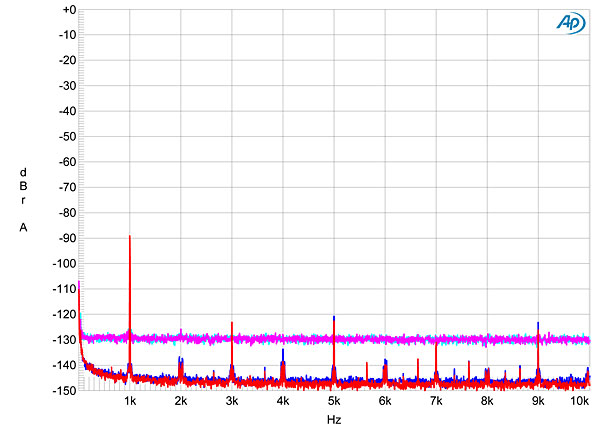
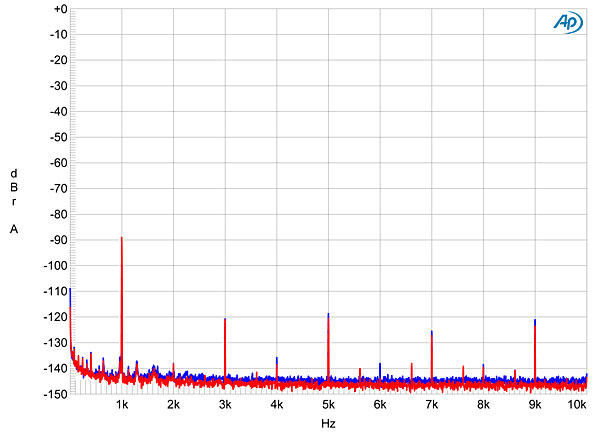
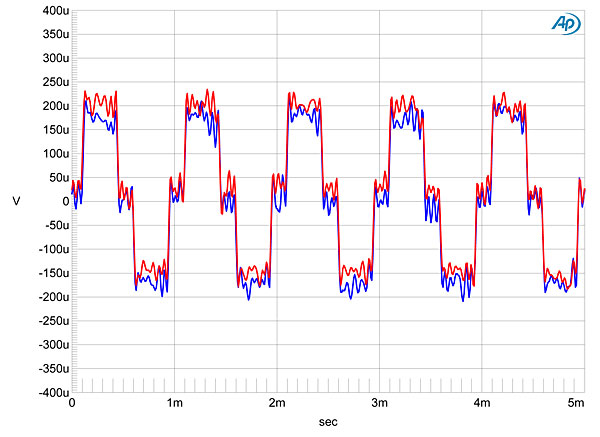
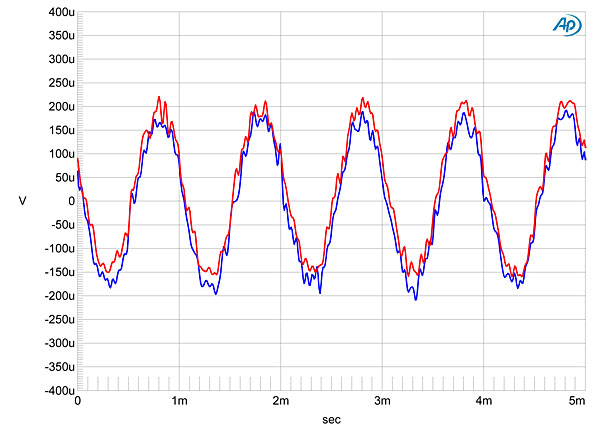
The C7R's digital inputs had problems handling a full-scale mix of 19 and 20kHz 24-bit tones, with a multiplicity of intermodulation products visible (fig.8). Reducing the level of the tones by 10dB gave a clean spectrum (fig.9), but again, this suggests that there is something suboptimal in the way the C7R handles 24-bit data. However, jitter with both 16- and 24-bit data was low via both the S/PDIF and USB inputs. Fig.10 shows the spectrum of the C7R's line output while it decoded the 24-bit J-Test data via USB. While sidebands can be seen at the power-supply–related frequencies of ±120, ±180, and ±240Hz, these are all very low in level. They are absent with the same test repeated with S/PDIF data (fig.11).
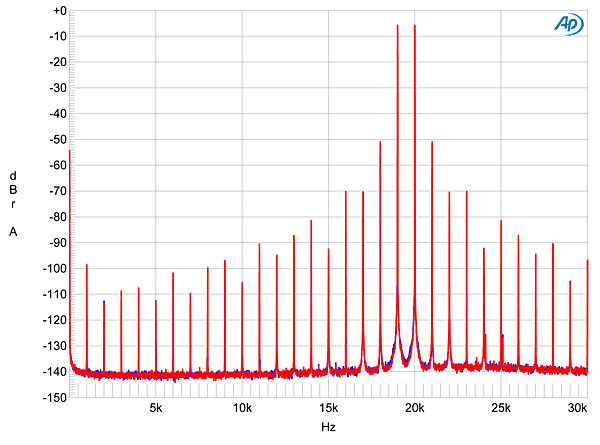
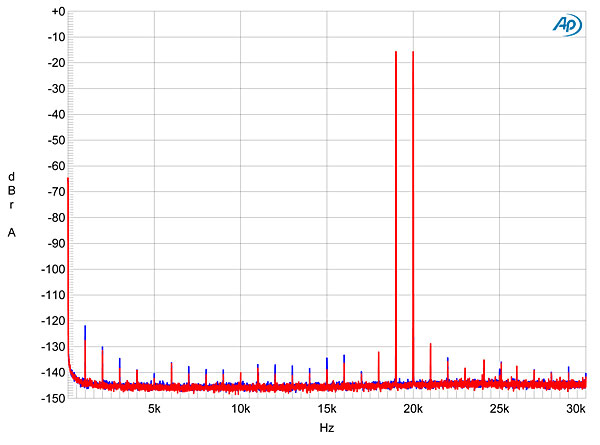
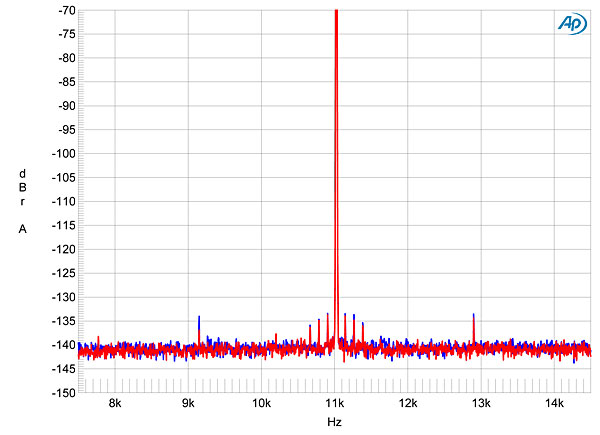
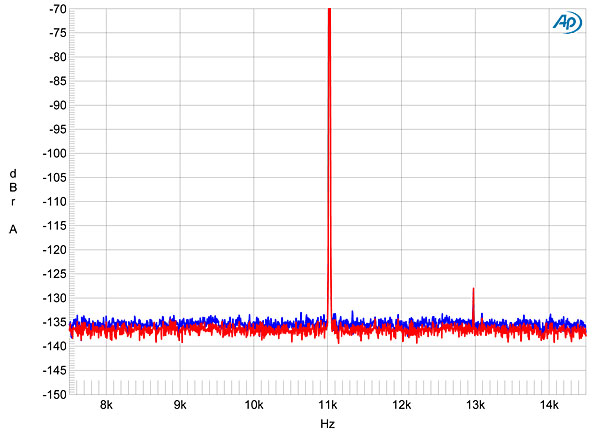
The C7R's performance via its analog input had a maximum gain of 28.35dB, and again inverted polarity at both line and speaker outputs. The line outputs offered a source impedance of 100 ohms at all audio frequencies. The digital-domain volume control operated in accurate 0.5dB steps. The analog input impedance was 12k ohms across the audioband; the output impedance was a low 0.08 ohm in the bass and midrange (including 6' of speaker cable), but was difficult to assess at the top of the audioband, as the presence of the low-pass filter gave a higher output with lower load impedances. However, the variation in response with our standard simulated loudspeaker was very low (fig.12, black trace). The channels were closely matched, and the measured response was unaffected by the volume-control setting. The C7R's output rolled off sharply above 20kHz, which visibly lengthened the risetimes of a 10kHz squarewave (fig.13). As the C7R digitizes its analog inputs, I was surprised not to see the usual symmetrical Gibbs Phenomenon "ringing" on the tops and bottoms of the waveform. Eliminating the C7R's ultrasonic switching noise with the Audio Precision low-pass filter unmasked a very slight degree of overshoot on this waveform.
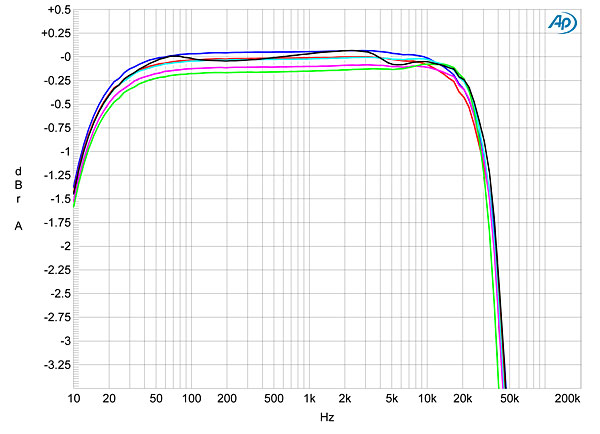
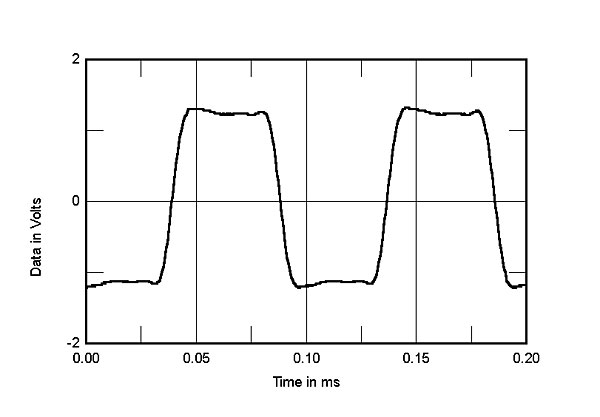
Channel separation via the line input and measured at the speaker outputs (not shown) was excellent, at 90dB below 1kHz, though it did decrease to 69dB L–R and 63dB R–L at 20kHz. With the line input shorted and the volume control at its maximum, there was 790.5mV of ultrasonic noise present at the speaker terminals with a center frequency of 470kHz. This is equivalent to an unweighted, wideband signal/noise ratio of just 12.4dB. Restricting the measurement bandwidth to 22kHz improved the ratio to a good 75.6dB, while A-weighting the result increased it further, to 78.3dB. Fig.14 reveals that the amplifier's lower-frequency noise floor is contaminated with supply-related spuriae, but these are all too low in level to have any subjective consequences.
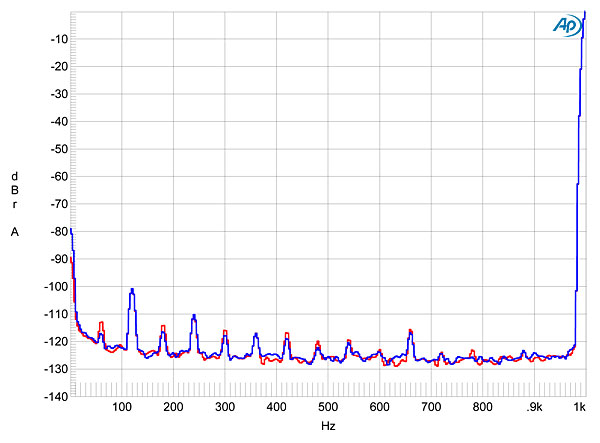
Figs. 15 and 16 show how the THD+noise percentage in the C7R's output varies with output power, the measurement performed with the auxiliary Audio Precision low-pass filter to remove the ultrasonic noise. The downward slope of the traces below 20W in these two graphs suggests that the actual distortion is below the noise until this output power is reached. Defining clipping as when the THD+N reaches 1%, the Bel Canto comfortably exceeds its specified power of 60Wpc into 8 ohms (17.8dB), not clipping until 70Wpc (18.45dBW). Into 4 ohms, the C7R clips at the specified 120Wpc (17.8dBW).
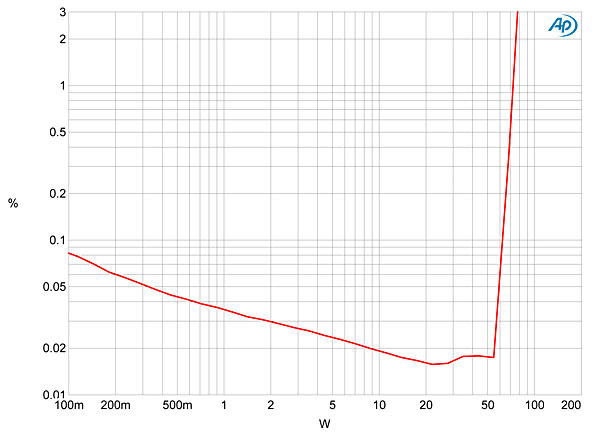
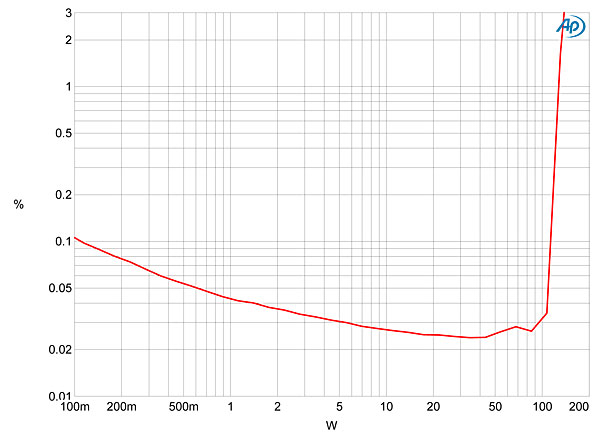
I plotted how the THD+N varied with frequency at a level (12.65V, equivalent to 20W into 8 ohms) where I could be sure I was looking at distortion. The result, shown in fig.17, reveals the C7R to offer low distortion in the midrange and bass, even into 2 ohms (black trace). However, as is common with class-D amplifiers, the distortion rose at high frequencies, though not to an alarming extent. The distortion into 8 ohms was strongly second and third harmonic in nature (fig.18), although higher-order harmonics appeared into 4 ohms (fig.19). Despite the reduced linearity at high frequencies seen in fig.17, the intermodulation distortion with an equal mix of 19 and 20kHz tones was commendably low, even at a level just below visible waveform clipping on an oscilloscope (fig.20).
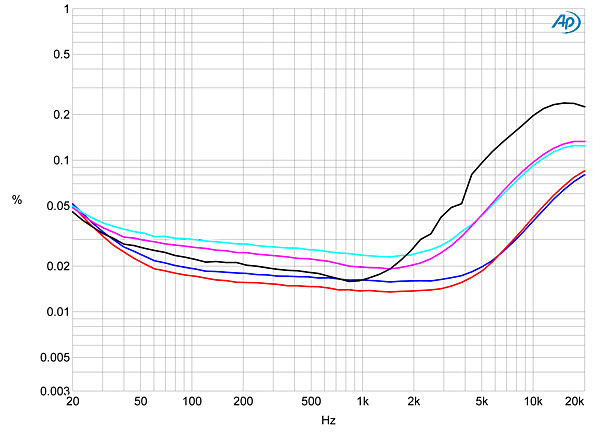
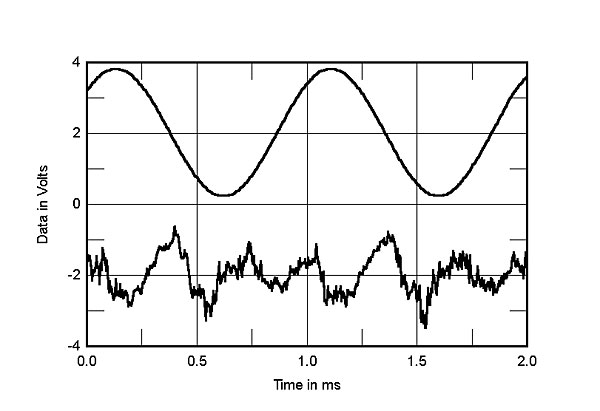
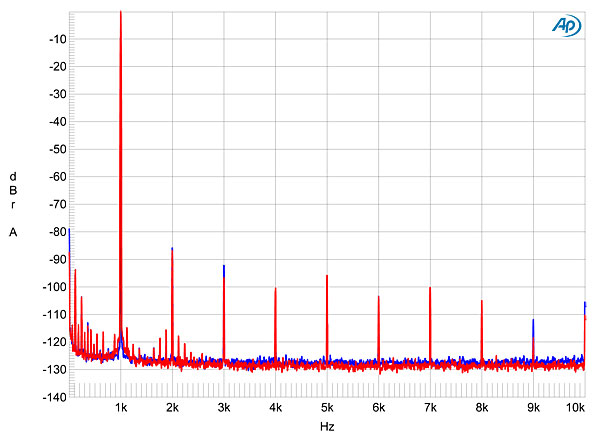
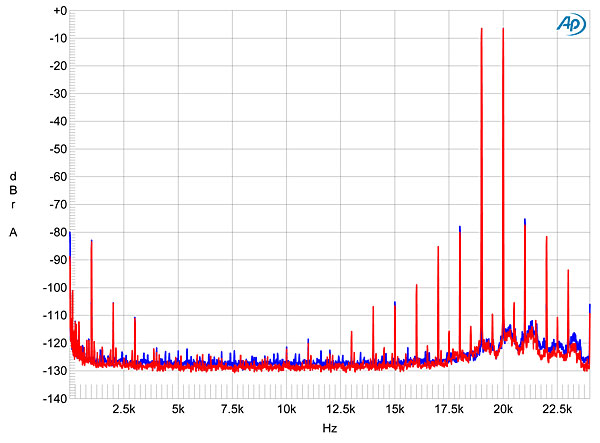
As a conventional integrated amplifier with a class-D output stage, the Bel Canto C7R measures well. Other than the apparent truncation of 24-bit data, the D/A section also performs well, and while the Bel Canto's USB input operates in the conventional adaptive mode, jitter was effectively rejected. Overall, the C7R is a well-designed piece of hardware.—John Atkinson

Not surprising! Whenever I read the mag, Bel Canto is often one of the 'Associated Equipment. Must be a gem! Maybe, I will learn at T.H.E. Show in Newport!

I love gear like this, offers great sound, great build quality why would you need anything else? Linn had their first Linn Majik integrated that was able to accept a "sneaky" module that could also turn it into a receiver, was expensive though. This though adds all that plus DAC for so much less and it is an American company. Very nice review of a lovely product.
nick

After owning the C7R for a week, I think I have discovered the best feature: There is no Standby switch. This encourages you to leave the unit on, so when you walk into the room, the question is not "Should I turn it on" but "Should I unmute it"? Makes you listen to a lot more music.

Does anyone have issues with low output? The built in tuner is fine but the digital inputs seem to have much lower output, i can easily get to the 100 mark on the volume..

Yes, I am using it in a small (10x12) room with very efficient speakers (93dB/2.83v) and I tend to have the volume cranked up to 65 or 70 most of the time. My friends say that I listen too loudly, but I can easily imagine the unit running out of steam in a larger room or with less efficient speakers.

Thanks can you test if the built in tuner has a higher output on yours? with the built in tuner the output is very loud at 80 with the digital inputs i have to go to 90... Thanks

You appear to be correct. I just tried an FM broadcast station vs. the same station streamed from my Mac. I matched the volumes as closely as I could, and got about 50 on the FM tuner and 57 on USB.